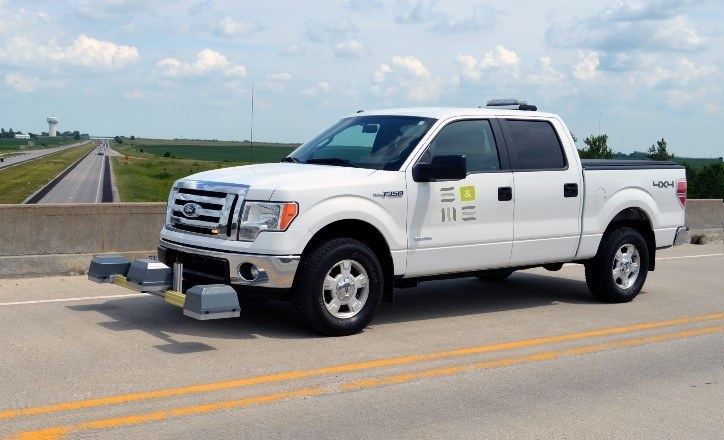June 04, 2020
Pavement Testing
Pavements facilitate the safe and efficient operations and movement of personnel and consumer goods. Therefore, their structural and functional performance are essential. Proper pavement testing, analyzing, and applying the most appropriate rehabilitation and preservation methods can deliver cost savings and long-term use.
Our experts provide pavement testing and design services resulting in:
- Knowledge of existing pavement condition and alternatives for rehabilitation methods
- Pavement structure material optimization and potential cost savings
- Reduced time and cost risks, contingency pricing for pavement reconstruction and rehabilitation

Vladimir Mitchev
S&ME Pavement Group Manager, Vladimir Mitchev, speaks to his experience with pavement testing and analysis.
Vlad says,
“Pavements are a large part of surface infrastructure as typically they account for 30-40% of a project construction cost. Knowing your pavements condition and life-cycle allows for making informed decisions about budget planning and optimization of funds, assets preservation, construction risk management, and improved safety for the traveling public.”
Pavement Failure
Pavement failure occurs when an asphalt surface no longer holds its original shape due to material stress, poor subgrade integrity, poor drainage, and other environmental factors. At S&ME, our versatility and experience in geotechnical engineering and material testing provide confidence to our clients in our ability to address the complete pavement structure. Below are a few common examples of pavement failures you may have seen while driving your local highways and roadways:
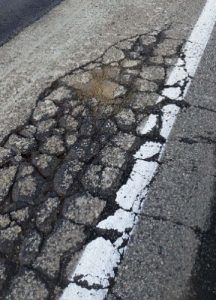 Severe Fatigue/Alligator Cracking
Severe Fatigue/Alligator Cracking
Severe fatigue or alligator cracking is a result of pavement overloading. Additionally, water can permeate through the cracks and reduce the base structural support thus accelerating failure.
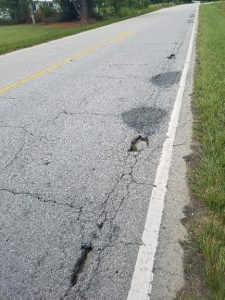 Reflective and Block Cracking
Reflective and Block Cracking
Reflective and Block Cracking occurs from stresses in the pavement structure due to underlying joints or cracks, and in the case of block cracking, temperature differentials. Block cracking appears as ‘square’ shaped cracks. This is an early-stage development before pavement failure reaches the Severe Fatigue stage.
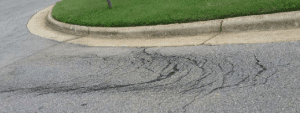 Shoving
Shoving
Shoving is typically caused by an issue with materials or constructability. It can occur in a few ways: not using enough bonding material resulting in a failed adhesion between the top and bottom layer or placement of asphalt with high fluidity. Each scenerio can result in traffic weight pushing the asphalt surface to create shoving.
Pavement Rehabilitation and Preservation
Our team manages pavement assets with cost-effective, practical maintenance applications to rehabilitate and extend the life of existing pavements. We provide comprehensive pavement engineering knowledge, practices, and technologies to assess existing pavement structural and functional conditions, estimate remaining service life, and develop alternative pavement preservation and rehabilitation strategies based on life-cycle cost analysis. We use various pavement preservation techniques and pavement rehabilitation methods to deliver the most cost-effective, technically sound pavement management options.
Non-Destructive Pavement Testing
Our Transportation team operates technically advanced equipment that evaluates and tests many aspects of pavement including structural condition, thickness, roughness, and friction.
Structural Condition Testing: Falling Weight Deflectometer (FastFWD) Capabilities
- Supports pavement design, maintenance, and rehabilitation
- Characterizes pavement layer and subgrade stiffness
- Evaluates pavement structural condition
- Estimates pavement life expectancy, or remaining equivalent single axle load (ESALs)
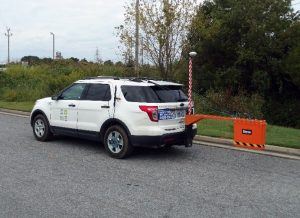
S&ME’s GPR
Thickness Survey: Ground Penetrating Radar (GPR) Capabilities
- Provides accurate pavement and base layer thickness
- Supplies continuous pavement thickness data
- Reduces coring
- Reduces and/or eliminates traffic control

S&ME’s IRI
Roughness Testing: Dual Line Inertial Profiler (IRI) Capabilities
- Calculates International Roughness Index (IRI)
- Identifies localized roughness
- Provides roadway images along with profile data
- Offers Global Positioning System (GPS) and Distress Manifestation Index (DMI) referencing
- Measures pavement surface macrotexture for friction management
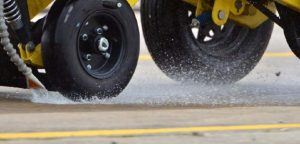
S&ME’s NAC-Dynamic Friction Tester
Friction Testing: Neubert Aero. Corp (NAC)-Dynamic Friction Tester Capabilities
S&ME’s NAC-Dynamic Friction Tester provides friction data for safe operations of airfields and highways.
- Measures, records, and graphs Coefficient of Friction Mu and Runway condition reading (RCR)
- Surveys for 14 potential roadway surface friction contaminants
- Data graphs for corrective action and maintenance planning
Pavement Projects
Our team completes pavement condition surveys for cities, counties, state agencies and airports. We also provide a wide range of pavement testing, analysis, and design services for roadways, airports, parking facilities, private development, greenways, and inter-modal facilities.
Read more about a few recent projects:
NCDOT Division 3 Pavement Testing
NCDOT contracted S&ME to provide pavement design and engineering services. The work allowed the North Carolina Department of Transportation (NCDOT) to determine rehabilitation methods and plan their three-year resurfacing budget.
Tellico Village, TN Pavement Conditions Survey
S&ME conducted a Pavement Condition Index (PCI) for all pavement street segments within Tellico Village in Loudon, TN owned and maintained by the Tellico Property Owners Association (POA). In doing so, the team provided the POA with a five-year pavement maintenance and rehabilitation plan to better manage their assets.
Smith-Reynolds Airport Pavement Testing and Recommendations
In early 2020, Smith Reynolds Airport looked to evaluate Runway 15-33 for its current condition and rehabilitation recommendations. S&ME recommended using GPR testing in order to save time and money by avoiding the shutdown of daily airport operations.
Pavement Services
S&ME’s Transportation team supports the entire pavement life-cycle including:
- Pavement coring
- Subgrade testing
- Subsurface investigation
- Ground Penetrating Radar survey
- Non-destructive pavement structural testing
- Pavement structural design
- Materials selection
- Laboratory testing
- Asphalt and concrete mix designs
- Construction quality control
- Pavement smoothness and friction testing
- Pavement condition surveys
- Long-term pavement management and rehabilitation strategies
Contact Us
For more information, please contact Vladimir Mitchev at vmitchev@smeinc.com.

